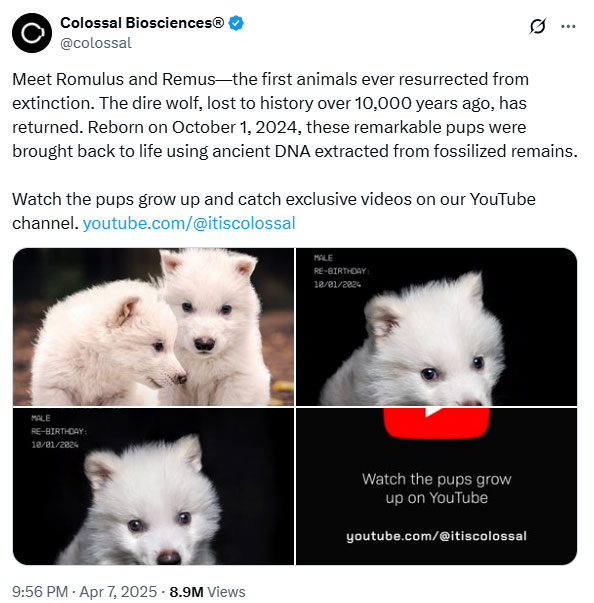In a move that appears as straight from the pages of science fiction, US biotech firm Colossal Biosciences has reported to have resurrected the now-extinct dire wolf—a creature that inhabited the planet more than 12,000 years ago.
The feat, if confirmed, would be the world's first successful "de-extinction" and a leap of monumental proportions toward reconnecting lost biodiversity.
Researchers recovered DNA from two fossils of dire wolves, the company said. One was a 13,000-year-old tooth recovered in Ohio, and the other a 72,000-year-old skull discovered in Idaho. With this ancient DNA, scientists used contemporary gene-editing technology, including CRISPR, to edit the DNA of a grey wolf—the closest living relative of dire wolves.
The payoff? Three robust pups known as Romulus, Remus, and Khalsa, who were born between October 2024 and January 2025. These pups are now reported to be living safely in an undisclosed natural setting.
So, did scientists actually resurrect the dire wolf from extinction? Well, sort of. Though the newborn wolves look physically like dire wolves—having bigger jaws, thicker coats, and a heavier build—genetic tests show they're still 99.9% grey wolf. What experts say is that these animals are not really dire wolves but genetically engineered grey wolves meant to replicate their ancient ancestors.

Colossal's scientists made 20 genetic alterations in 14 genes to reproduce the distinctive traits of the dire wolf. The firm says this breakthrough not only brings back a legendary species but also opens doors to further initiatives in environmental regeneration and preservation.
The project has caused a buzz and interest globally, with some praising it as a scientific breakthrough, while others are concerned about the ethics of bringing back extinct species. Interestingly, the dire wolf became pop-culture famous via the popular TV show Game of Thrones, where it was featured as a mythical, larger-than-life creature.
Whether or not this is an actual resurrection or an incredible simulation, Colossal Biosciences has certainly tested the limits of what can be achieved in gene editing—and sparked a worldwide debate about where science should set its boundaries.






